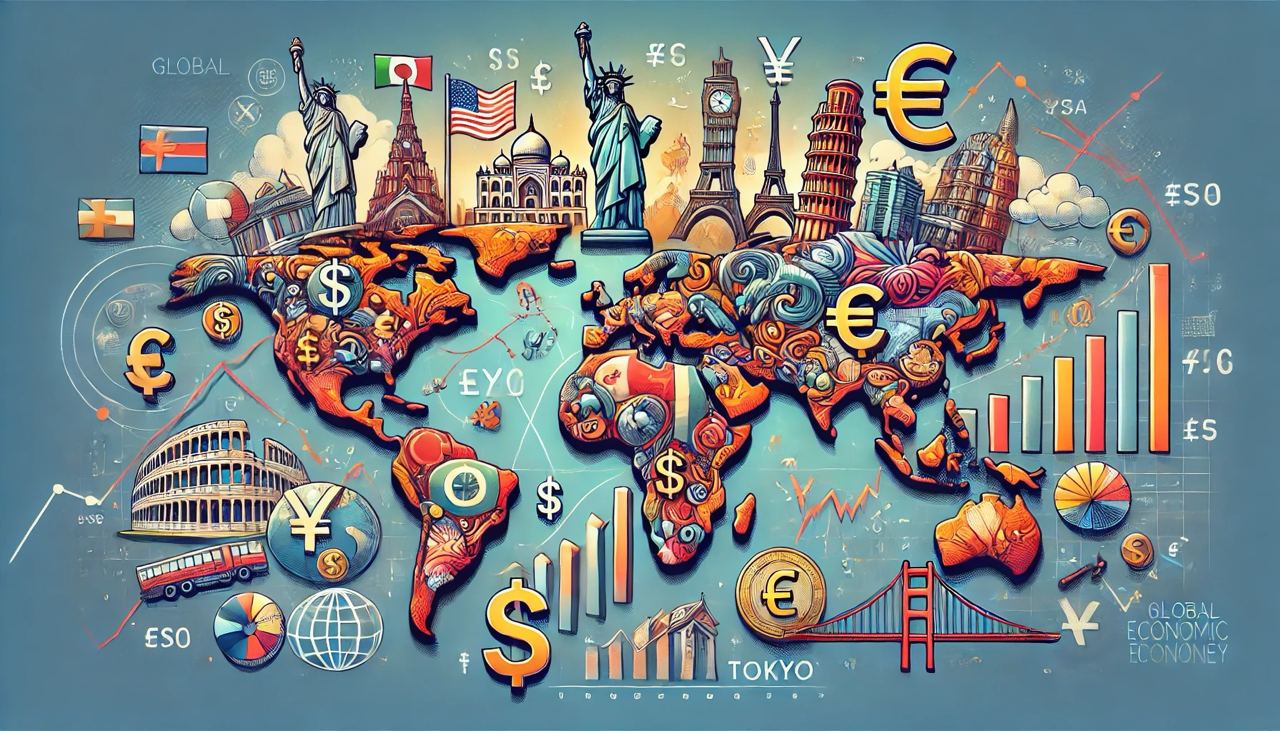Learn Trading for Free and Without Registration
An Online Glossary to Study Trading Independently
Currencies for Trading
Currencies for Forex Trading

In our previous lesson, we explored what the Forex market is. Now, let’s dive into the currencies traded on this global market and understand their unique features and significance.
What Is a Currency Pair?
Forex trading revolves around exchanging one currency for another at the current market rate. This exchange is referred to as trading a currency pair, which shows the value of one currency relative to another.
For example, if you want to exchange Russian rubles for US dollars at an exchange rate of 65 RUB per USD, you would divide your ruble amount by 65 to determine the equivalent in dollars.
Each currency has a three-letter code:
- USD — US Dollar
- EUR — Euro
- JPY — Japanese Yen
- GBP — British Pound, etc.
A currency pair is typically written as:
Base Currency / Quote Currency
For instance, in the pair USD/RUB, USD is the base currency, and RUB is the quote currency. If the USD/RUB rate is 65, this means 1 USD equals 65 RUB.
Key Currencies for Forex Trading
The Forex market offers a vast selection of currency pairs, ranging from widely traded pairs to more exotic combinations. However, some currencies stand out due to their global economic importance and high trading volume.
Popular Currencies and Their Features
-
USD (US Dollar):
The most liquid and widely traded currency, considered a safe-haven asset due to the strength of the US economy. -
EUR (Euro):
The primary currency of the Eurozone, crucial for export-oriented economies. -
GBP (British Pound):
Known for its volatility, making it attractive for technical analysis-based strategies. -
CHF (Swiss Franc):
A stable currency often sought during periods of economic uncertainty. -
JPY (Japanese Yen):
Notable for its activity and wide price swings, appealing to risk-seeking traders. -
CAD (Canadian Dollar):
Closely tied to oil prices, as Canada is a major exporter of crude oil. -
AUD and NZD (Australian and New Zealand Dollars):
These currencies often exhibit long-term trends influenced by global trade and commodity prices. -
RUB (Russian Ruble):
Highly volatile due to geopolitical events and economic sanctions, making it significant for domestic traders.
How Exchange Rates Are Determined
The exchange rate of a currency pair reflects the relationship between two currencies and fluctuates based on changes in the economies they represent. You can think of the exchange rate as a fraction, where changes in the numerator or denominator affect the overall value.
Factors Influencing Exchange Rates:
-
Liquidity:
Major currency pairs like EUR/USD and USD/JPY have high liquidity, ensuring stable pricing and narrower spreads. -
Trade Relationships:
Currency pairs between major trading partners, such as EUR/GBP or USD/CAD, maintain relatively steady exchange rates due to balanced demand and supply. -
Government Intervention:
Some currencies, like the Chinese Yuan (CNY), are regulated by their governments. These rates are fixed or pegged and do not fluctuate freely based on market dynamics.
Unique Characteristics of Currency Pairs
The most popular pairs, involving the US Dollar (USD), are known as majors. They are highly liquid and generally offer the tightest spreads.
-
Pairs with USD and EUR:
For example, EUR/USD is the most traded pair due to its high liquidity and economic significance. -
Regional Pairs:
Pairs like AUD/NZD or EUR/GBP reflect strong trade relationships and have relatively stable pricing. -
Exotic Pairs:
Emerging market currencies like USD/RUB or USD/ZAR (South African Rand) feature lower liquidity and higher volatility, presenting unique opportunities and risks.
Conclusion
Each currency in the Forex market has distinct characteristics that determine its behavior and market relevance. Understanding the nuances of currency pairs, the factors driving exchange rates, and the economic connections between countries enables traders to make well-informed decisions.
Forex is not just about profits—it’s about acquiring deep knowledge, maintaining discipline, and developing the ability to analyze macroeconomic trends.
For beginner traders, focusing on major currency pairs is recommended. Their high liquidity and stability make the market more predictable and accessible for newcomers.


